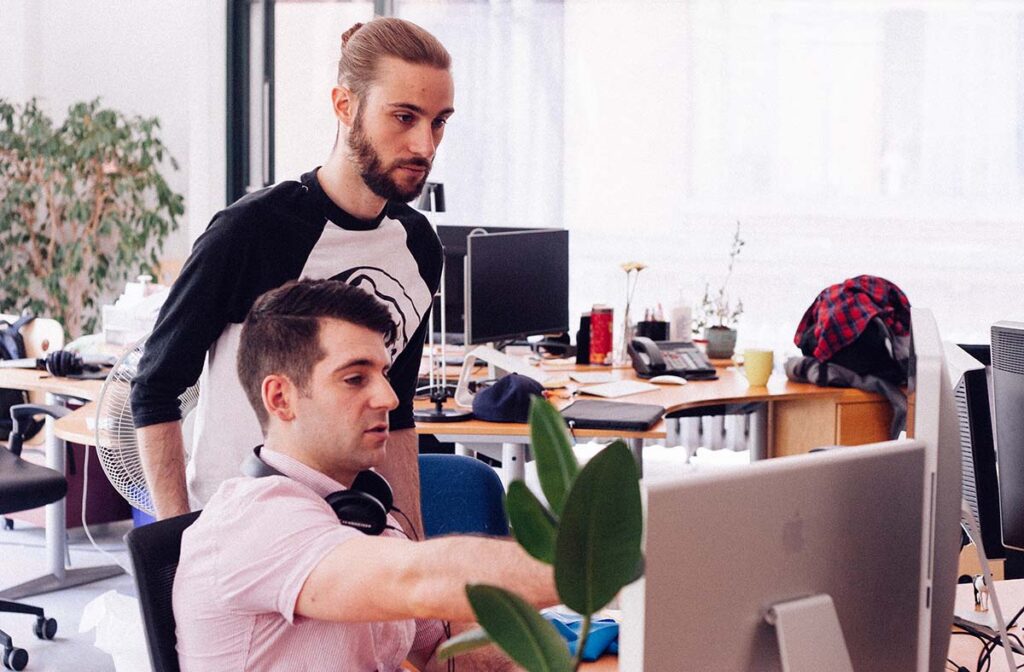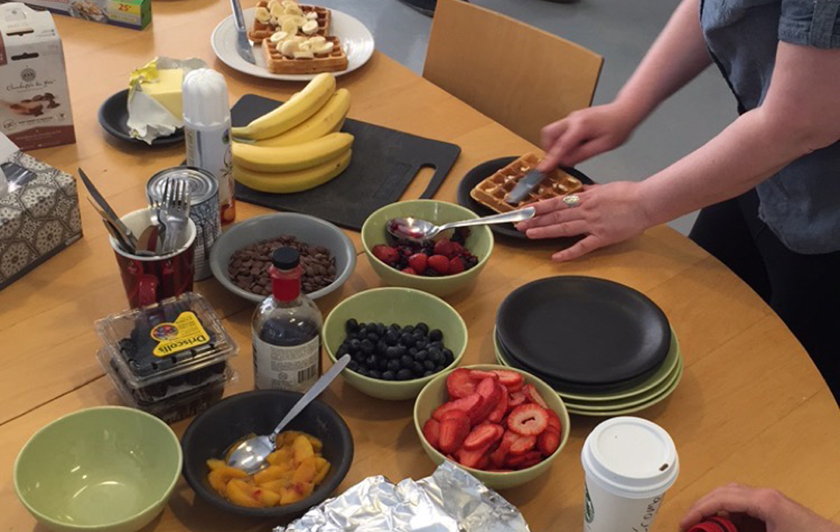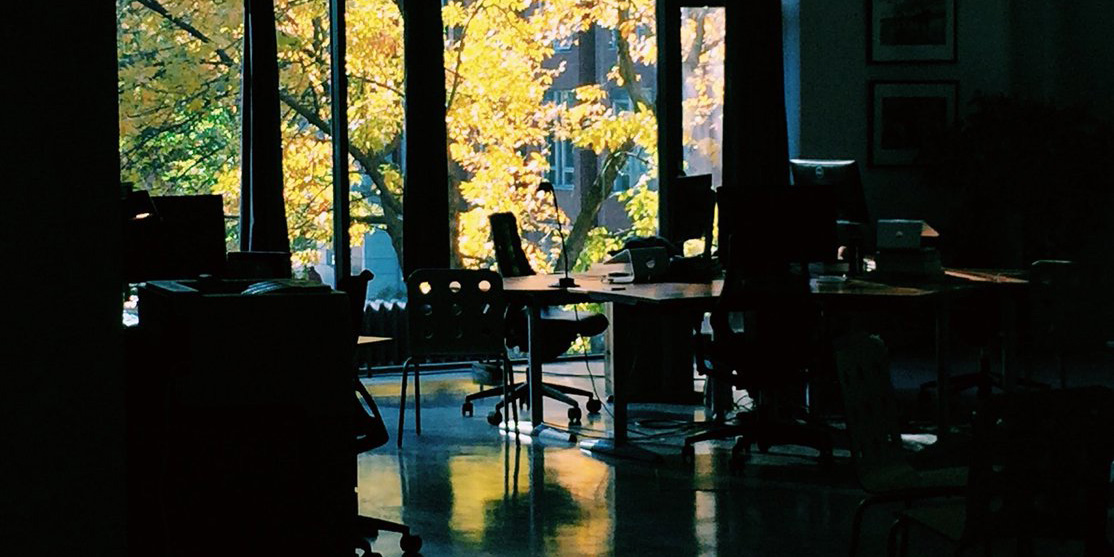Why we work together IRL
While digital nomads sip margaritas under palm trees on the beach, and pyjama-clad remote workers fight their cats for desk space, we’ve dug in our heels as an in-person, in-office team. All silly stereotypes aside, we know that remote arrangements can
work perfectly well for some teams, we just prefer to stick together.
We consider it a strength that our entire, close-knit team works in our downtown Montreal office. It’s been part of our DNA since we started, and continues to define how we collaborate. We’re a cooperative, cross-functional team, and we work closely together
on every front. So our structure reflects that. When a problem or a question pops up, our team is there – right there! – for each other.

For remote work to really work, you have to invest in tools and protocols.
Yes, the technology exists to allow anyone to work from anywhere at any time. But for remote arrangements to function, a sturdy communication protocol needs to be developed to keep everyone up to speed and ensure things run smoothly – especially when
working in different time zones. Having some workers remote while others are in the office every day can create two tiers of employees, with those out of sight slipping out of mind. Sure, for some companies the ability to hire the best and brightest
without having to relocate them is enough of an advantage to build protocols that bridge those communication pitfalls. With a small team like ours, we prefer to stay in the physical realm as much as possible.

Being together fosters collaboration and better decision making
It’s no big revelation that a lot of nuance is lost when we use technology to replace the face-to-face. Even with a crystal clear video feed, you can miss that off-camera moment of hesitation on a colleague’s face that prompts a question or a further
clarification. We believe those moments are valuable in a way you can’t put a price on. The more we’re together in the same room, the more we learn what makes each other tick. It makes us better communicators and collaborators.
Yes, we have an open-plan office. Yes, that can be distracting. But guess what, distractions are everywhere! We’ve gotten good at cultivating a quiet but social workspace. Most of the chatter is contained in Slack, and headphones are a wonderful thing
when you want to tune everything out and focus on the task at hand. And while interruptions can get you off track, they can also solve roadblocks more quickly than waiting for a response by email or chat. Being able to walk over to a colleague’s desk
and physically point at something that needs clarification really helps to keep things rolling. Physical proximity enables focussed conversations, ad hoc innovating, and real-time decision making.

Come into the kitchen
Shared spaces lead to shared experiences, which contribute to a sense of belonging. Coming together in the kitchen to share a meal, watch a protest march by, or gripe about the weather, is a welcome break from work and a way to get to know each other
better. We relish the opportunity to raise a glass together to celebrate a launch, a special event, or just the arrival of Friday. Our office is an anchor, a connection to our neighbourhood and our city. And as much as we love technology, we love people
more.


Leave a Reply